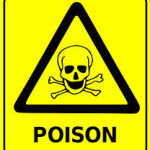Are you planning on murdering someone, but your only stop is the fear of getting caught?
 Or are you plotting a thriller where your serial-slayer stays steps ahead of that dogged detective who’s also top-tier in her trade?
Or are you plotting a thriller where your serial-slayer stays steps ahead of that dogged detective who’s also top-tier in her trade?
Maybe both? Well, I’ll give you a cake and let you eat it, too… if you’ll follow me on how homicide cops investigate murders.
Think about it. There are only four ways you can get caught. Or get away with it. All seasoned sleuths intrinsically know this, and they build their case on these four simple pillars. Let’s take a look at them.
What not to do
 # 1 Don’t leave evidence behind that can identify you to the scene. Such as fingerprints, footwear or tire impressions, DNA profiles, ballistic imprints, gunshot residue, toolmarks, bitemarks, handwritten or printed documents, hair, fiber, chemical signatures, organic compounds, cigarette butts, spit chewing gum, toothpicks, a bloody glove that doesn’t fit, or your wallet with ID (seriously, that’s happened).
# 1 Don’t leave evidence behind that can identify you to the scene. Such as fingerprints, footwear or tire impressions, DNA profiles, ballistic imprints, gunshot residue, toolmarks, bitemarks, handwritten or printed documents, hair, fiber, chemical signatures, organic compounds, cigarette butts, spit chewing gum, toothpicks, a bloody glove that doesn’t fit, or your wallet with ID (seriously, that’s happened).
 # 2 Don’t take anything with you that can be linked. Including all of the above, as well as the victim’s DNA, her car, jewelry, money, bank cards, any cell phone and computer records, that repeated modus operandi of your serial kills, no cut-hair trophies, no underwear souvenirs, and especially don’t keep that dripping blade, the coiled rope, or some smoking gun.
# 2 Don’t take anything with you that can be linked. Including all of the above, as well as the victim’s DNA, her car, jewelry, money, bank cards, any cell phone and computer records, that repeated modus operandi of your serial kills, no cut-hair trophies, no underwear souvenirs, and especially don’t keep that dripping blade, the coiled rope, or some smoking gun.
# 3 Don’t let anyone see you. No accomplices, no witnesses, and no video surveillance. Camera-catching is a huge police tool these days. Your face is captured many times daily – on the street, at service stations, banks, government buildings, private driveways, and the liquor store.
 # 4 Never confess. Never, ever, tell anyone. That includes your best drinking buddy, your future ex-lover, the police interrogator, or the undercover agent.
# 4 Never confess. Never, ever, tell anyone. That includes your best drinking buddy, your future ex-lover, the police interrogator, or the undercover agent.
So, if you don’t do any of these four things, you can’t possibly get caught.
Now… What To Do
Humans are generally messy and hard creatures to kill – even harder to get rid of – so murder victims tend to leave a pool of evidence. Therefore it’s best not to let it look like a murder.
Writers have come up with some fascinating and creative ways to hide the cause of death. Problem is – most don’t work. Here’s two sure-fire ways to do the deed and leave little left.
 # 1 Cause an Arterial Gas Embolism (AGE) This one’s pretty easy, terribly deadly, and really difficult to call foul. An AGE is a bubble in the blood stream, much like a vapor lock in an engine’s fuel system. People die when their central nervous system gets unplugged, and a quick, hard lapse in the carotid artery on the right side of the neck can send an AGE into their cerebral circulation. The brain stops, the heart quits, and they drop dead.
# 1 Cause an Arterial Gas Embolism (AGE) This one’s pretty easy, terribly deadly, and really difficult to call foul. An AGE is a bubble in the blood stream, much like a vapor lock in an engine’s fuel system. People die when their central nervous system gets unplugged, and a quick, hard lapse in the carotid artery on the right side of the neck can send an AGE into their cerebral circulation. The brain stops, the heart quits, and they drop dead.
Strangulation is an inefficient way to create an AGE and it leaves huge tell-tale marks. You’re far better off giving a fast blast of compressed air to the carotid… maybe from something like that thing you clean your keyboard with… just sayin’.
 # 2 Good Ol’ Poison Ah, the weapon of women. Man, have there been a lot of poisonings over the centuries and there’s been some pretty, bloody, diabolical stories on how they’re done. Problem again. Today there’s all that cool science. The usual suspects of potassium cyanide, arsenic, strychnine, and atropine still work well, but they’ll jump out like a snake-in-the-box during a routine tox screen.
# 2 Good Ol’ Poison Ah, the weapon of women. Man, have there been a lot of poisonings over the centuries and there’s been some pretty, bloody, diabolical stories on how they’re done. Problem again. Today there’s all that cool science. The usual suspects of potassium cyanide, arsenic, strychnine, and atropine still work well, but they’ll jump out like a snake-in-the-box during a routine tox screen.
You need something that’s lethal, yet a witch to detect. I know of two brews – one is a neurotoxin made from fermented plant alkaloid, and the other is a simple mix of fungi & citrus. This stuff will kill you dead and leave no trace, but I think it’s quite irresponsible to post these formulas on the net.
So there, I’ll leave it with you to get away with murder. But if you have some crafty novel plot that needs help, I’m dying to hear your words.
Oh, and watch out for what’s in that cake that you’re eating.


I’m currently (attempting to) write a novel about a teen who gets into murdering due to the high of emotions she feels. She’s done her research, she knows (roughly) how to get away with it, however, I don’t know what poison would be best. I highly doubt she’d be able to get her hands on some horse tranquilizers or any other heavy duty drug, ad all my internet searches have been a bust. Any tips?
Hi Ebony! I’m going to hint that you might want to research organic pathogens that can be cultivated and administered with a little effort. Check out botulism and listeria *wink*.
Hi, Garry
Thanks once again for your post on C S Larkin’s blog Live Write Thrive. Finding your blog has been timely as my killer is waiting to strike and try and kill off my protagonist. She is lying in a hospital bed in a coma, so of course AGE is my preferred method of death. I have yet to research, speak to medical friends about the process of injecting an air bubble into an intravenous line, but if you have any thoughts, suggestions on this matter or if you think that suffocation with a pillow is a better method, let me know. This is actually the big finale of my novel. The killer is a drug dealer and my protagonist was a witness to his accidental murder of his girlfriend whom he was trying to coerce into being a drug mule. The protagonist suffered a fall and blow to the head when she was trying to escape the killer, was rescued by strangers but suffered amnesia. Within her coma, the memory returns and so I still have to figure out that final scene of bedside confession by the killer, why he figures he must kill her now (i.e. is there some way he figures that she knows who he is, by monitor behavior?) but AGE has always been the way I figured he would try and kill her. Any and all thoughts, suggestions would be most welcome.
Hey Karen. Thanks for finding me on Susanne Lakin’s blogsite. Here’s my suggestion.
An Arterial Gas Embolism (AGE) is caused by an interruption in the arterial blood flow which creates a bubble effect that is deadly within seconds. The most vulnerable place is the external carotid artery which feeds the brain. It runs on the right side of the neck and is most exposed between the mandible (chin) and the clavicle (shoulder). Your killer could do this by taking a syringe full of air and injecting right into the blood vessel, however this might be a hit & miss to get bullseye. Far more effective would be to take a compressed air container – like one of the aerosol containers to blow off your keyboard – and blast the right neck area. This would be less likely to show up at autopsy because the immediate death would mitigate a bruising effect, whereas an injection would leave a pinprick hole and a trace of bleeding. It would also be really easy to sneak in & out and would emit little noise and no pain.
Hope this helps & happy killing!
WOW! I don’t know how I missed this post! This is so perfect– really great stuff, Garry. Sharing widely…
Thanks, Sue. These are the honest, down to earth principles that homicide investigations follow… in fact every criminal investigation follows. Now other types of death that coroners get into like accident, suicide, natural and undetermined take a different path. They’re not a ‘who done it?’ – they’re more like a ‘wtf happened?’ and the rules of evidence that cops have to play within don’t apply.
I am a forensic show junkie; going on close to 20 years now. Enjoying your site and happy for your writing success. Amazed at how detectives connect the multitude of dots to solve crimes. Fascinating to me.
How about succinylcholine? That’s a good one that’s virtually undetectable and not normally looked for in toxicology tests.
Just sayin’.
🙂
🙂
Hi Kelly! Good question and I had to do a little homework.
For other readers, Succinylcholine is also known as Suxamethonium Chlorine or Anectine. It’s a general use muscle relaxant, also used as a horse tranquilizer and a precedent to some lethal injections. As it’s rapidly metabolized it’s difficult to detect in a general toxicology screen and, in some cases, not detectable even if it’s being specifically looked for. It’s difficult to administer in a murder – pretty much has to be injected rather than ingested – and needles always leave their marks.
I found a good article on ‘The Writer’s Forensics Blog’ by D.P. Lyle who also wrote the excellent book “Forensics For Dummies”. Rather than me parroting him, here’s the link. And thanks for your question!!
http://writersforensicsblog.wordpress.com/2010/01/11/succinylcholine-is-it-the-perfect-murder-weapon/